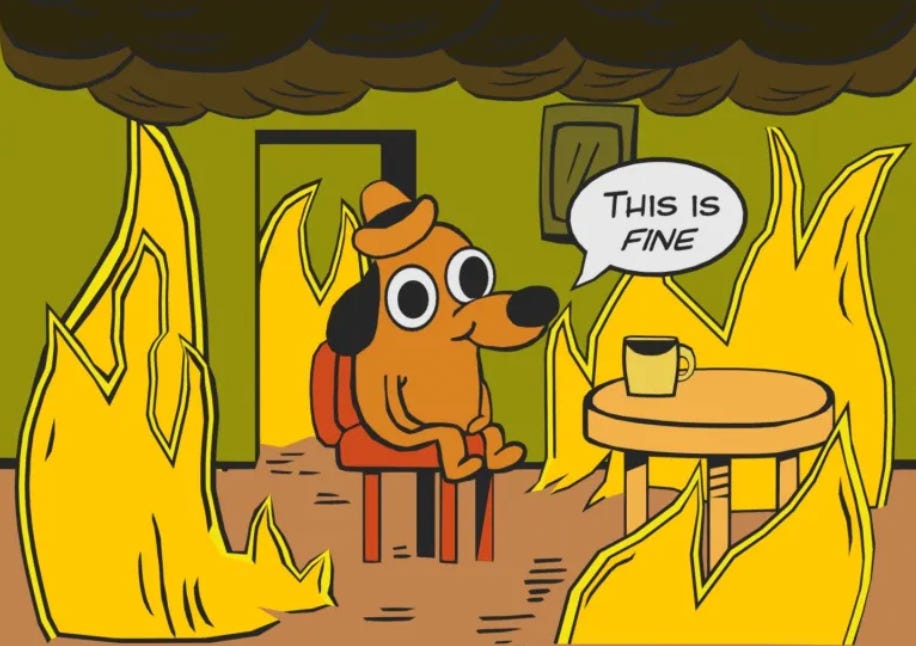⏰ The last-minute hiring requests
Why C-level planning falls short and how to fix it
The inability to plan effectively is C-level problem. So, how do we, as Talent Acquisition professionals, make organizational structure a top priority?
This challenge is all too familiar. Founders, especially in early-stage startups, often wait too long to plan for their talent needs. As a result, the recruiting team is forced to operate reactively, creating significant issues. We’ve all been there—when a founder comes to you with: “I need 6 roles filled by yesterday.” By then, it’s already too late.
The real cost of reactive hiring
This approach has a ripple effect that negatively impacts company success. Let me share an example: At one point, we found ourselves scrambling. The pressure on our talent team was intense, and chaos ruled. Everyone on the hiring panel was impatient, and hiring goals were tied to our OKRs or even rewards. This impatience led to a lowered bar for quality, and in the end, we hired three “meh” candidates. Just two days later, a much better candidate appeared, but by then, we didn’t have the budget left for them.
So, what works? A practical exercise
Here's my go-to approach to navigate this challenge:
Start with a conversation. It doesn’t need to be led by every recruiter, but it should be facilitated by the most senior talent leader in the team. If you’re the only recruiter in the organization, then take the lead. Sit down with leadership or the most senior HR person and sketch out a rough org chart for the next 3-6 months. Things will change, but having even a draft is invaluable. It gives you a clear starting point for conversations and helps everyone gain more context.
Try out these exercises:
For mature, later-stage companies: Focus on drafting detailed budgets. It’s about understanding what roles you need, when you need them, and how they’ll fit into the financial plan.
For early-stage startups: Expect more placeholders than concrete role IDs. Things will shift, but you should start identifying what’s needed, the required skills, compensation ranges, and most importantly, the impact each role will have on the business.
Understand the impact: For each role, clarify what it means for the business. How will it change things? What kind of impact will it have? This exercise not only helps with better hiring decisions but also feeds into how you’ll evaluate that person once they’re on board—providing clarity across the entire employee lifecycle.
Leverage tools for better planning
Using tools like FigJam for brainstorming sessions can be incredibly effective. It’s surprising how much you can map out visually when everyone’s contributing ideas. It makes the planning process collaborative and keeps things transparent.
Specific guidance for GTM roles:
For GTM roles, it’s especially important to consider predefined frameworks, like geographical and cultural strategies, that align with your customer base. Understanding these nuances upfront ensures you’re hiring talent that fits seamlessly into the broader strategy.
Support for recruiters: Building strategic partnerships
Recruiters often find themselves in the hot seat when founders or C-level execs make last-minute requests. Instead of just executing, take a proactive approach:
Seek partnership, possibly from HR or finance, to get a clearer view of the company’s future needs.
Engage in exercises envisioning where the company will be in 6 months. Identify growth opportunities and how your current team might expand.
The most senior HR/Talent member, or the sole recruiter if applicable, should facilitate these exercises to keep them focused and actionable.
Key takeaway: Plan, Plan, Plan!
By advocating for organizational clarity and planning, we as TA/HR professionals can shift the mindset from reactive to proactive hiring. This leads to better candidate experiences, smarter hiring decisions, and ultimately, stronger teams that drive the business forward
.


